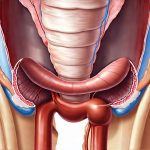Pelvic pain is a debilitating condition impacting millions worldwide, significantly affecting quality of life through limitations on movement, work capacity, and overall well-being. Often dismissed as “just part of getting older” or attributed to vague causes, chronic pelvic pain frequently stems from complex interactions between musculoskeletal structures, neurological pathways, and sometimes underlying systemic conditions. While many factors contribute to this type of discomfort – including hormonal changes, gastrointestinal issues, and reproductive health concerns – a surprisingly common but often overlooked element is the role of spinal misalignment and its cascading effect on the pelvis. Understanding how the spine influences pelvic stability and function is crucial for effective diagnosis and treatment strategies.
The intricate relationship between the spine and pelvis isn’t immediately obvious, yet it’s fundamental to biomechanical health. The spine acts as a central supporting pillar, transferring weight and force throughout the body. A misaligned spine – even a subtle one – can disrupt this delicate balance, creating imbalances that directly impact the pelvic region. This disruption manifests as uneven stress on ligaments, muscles, and joints surrounding the pelvis, leading to pain, inflammation, and functional limitations. Furthermore, nerve pathways originating in the spine innervate the pelvic organs and musculature; spinal misalignment can compress or irritate these nerves, contributing to referred pain or altered sensory input that exacerbates pelvic discomfort. This interconnectedness highlights the importance of considering spinal health when evaluating persistent pelvic pain.
Spinal Misalignment & Pelvic Instability
Spinal misalignments, often termed subluxations by chiropractors and manual therapists, are deviations from normal vertebral positioning and movement. These can occur due to a multitude of factors including trauma (falls, car accidents), repetitive strain injuries, poor posture, or even chronic stress. While not always painful in themselves, these subtle shifts accumulate over time, creating imbalances that ripple through the musculoskeletal system. When the spine loses its natural curvature or experiences restricted joint mobility, it alters weight distribution and forces a compensatory pattern on the pelvis below. A forward shift of the upper back (kyphosis) for example, can lead to anterior pelvic tilt, while a flattening of the lower back (loss of lordosis) may cause posterior pelvic tilt.
These altered pelvic positions have significant implications for function and pain experience. Anterior pelvic tilt commonly strains the lower back muscles and hip flexors, while simultaneously weakening the abdominal muscles. Posterior pelvic tilt often results in tight hamstrings and gluteal muscles. Both scenarios create uneven pressure on the sacroiliac joints (SIJs), leading to SI joint dysfunction – a frequent contributor to pelvic pain. Beyond muscle imbalances, spinal misalignment can directly impact the ligaments supporting the pelvis, compromising their ability to stabilize the region and increasing vulnerability to injury. The result is often a vicious cycle of pain, altered movement patterns, and further instability.
How Spinal Levels Relate to Pelvic Pain
The specific level of spinal misalignment significantly influences where pelvic pain manifests. Lower lumbar vertebrae (L4-L5) are particularly critical as they directly bear the weight of the upper body and transmit forces to the sacrum – the foundation of the pelvis. Misalignment at these levels can cause localized lower back pain and radiate down into the buttocks, hips, or even legs, mimicking sciatic symptoms. The thoracic spine (mid-back) also plays a vital role; restricted movement in the mid-thoracic region can limit pelvic mobility and contribute to imbalances further down the line.
Furthermore, cervical (neck) spinal misalignment shouldn’t be overlooked. While seemingly distant from the pelvis, the neck influences overall postural control and head position. A forward head posture, often caused by prolonged screen time or poor ergonomics, throws off the body’s center of gravity, forcing compensatory adjustments throughout the spine and ultimately impacting pelvic stability. – This demonstrates the holistic nature of musculoskeletal health and why a comprehensive assessment is necessary to identify the root cause of pelvic pain. – The nervous system’s role in these connections also cannot be understated; nerve compression or irritation at any spinal level can contribute to referred pain patterns in the pelvis.
Diagnostic Approaches & Assessment
Accurately diagnosing the contribution of spinal misalignment to pelvic pain requires a thorough and multifaceted assessment. A comprehensive history, including details about the onset, location, intensity, and aggravating/alleviating factors of pain, is essential. Physical examination should include postural analysis to identify any obvious imbalances or asymmetries. Palpation of the spine can reveal areas of tenderness, restricted movement, or muscle spasm. Range of motion testing assesses joint mobility and identifies limitations in spinal movement.
Specific orthopedic tests can help differentiate between various sources of pelvic pain, such as SI joint dysfunction, hip pathology, or nerve impingement. Diagnostic imaging – including X-rays, MRI, or CT scans – may be used to rule out structural abnormalities or underlying conditions. However, it’s important to note that imaging doesn’t always reveal the source of chronic pain; functional assessments evaluating movement patterns and biomechanics are often more informative. – Advanced motion analysis tools can also provide valuable insights into spinal and pelvic mechanics during dynamic movements. – A skilled clinician will integrate all these findings to develop a tailored treatment plan addressing both the spinal misalignment and any associated musculoskeletal imbalances.
Treatment Strategies & Rehabilitation
Treatment for pelvic pain related to spinal misalignment typically involves a combination of manual therapy, exercise rehabilitation, and postural correction. Manual therapy techniques – such as chiropractic adjustments, osteopathic manipulation, or myofascial release – aim to restore proper joint alignment and mobility in the spine and pelvis. These hands-on approaches help reduce muscle tension, improve nerve function, and alleviate pain. Exercise rehabilitation focuses on strengthening weak muscles (particularly core and gluteal muscles) and stretching tight muscles (such as hip flexors and hamstrings) to restore balanced muscle tone and support pelvic stability.
Postural correction exercises teach patients how to maintain proper body alignment during daily activities, preventing recurrence of misalignment. – Specific exercises may include core activation drills, bridging exercises, single-leg balance training, and postural retraining protocols. – Furthermore, addressing lifestyle factors such as ergonomics, stress management, and sleep hygiene can play a significant role in long-term pain relief and prevention. A multidisciplinary approach involving physical therapists, chiropractors, massage therapists, and other healthcare professionals may be necessary to address the complex interplay of factors contributing to pelvic pain. Ultimately, successful treatment requires an individualized plan that addresses the underlying causes of misalignment and restores optimal musculoskeletal function.





















